Article
Photo Finishes: Advice from Professional Photographers
Author(s):
Travel photography has become big business. But it's possible to take perfect vacation photos without buying expensive devices and carrying heavy equipment.
Photography by the authors
Travel photography has become big business. The households of North America are saturated not only with “point and shoots,” but also larger, heavier digital cameras. And travelers have become really productive photographers; any overhead shot of a sports stadium will show the flash units firing in fans’ efforts to light a scene from a vantage point several hundred yards away.
In some locations the photographers have become part of the story themselves.
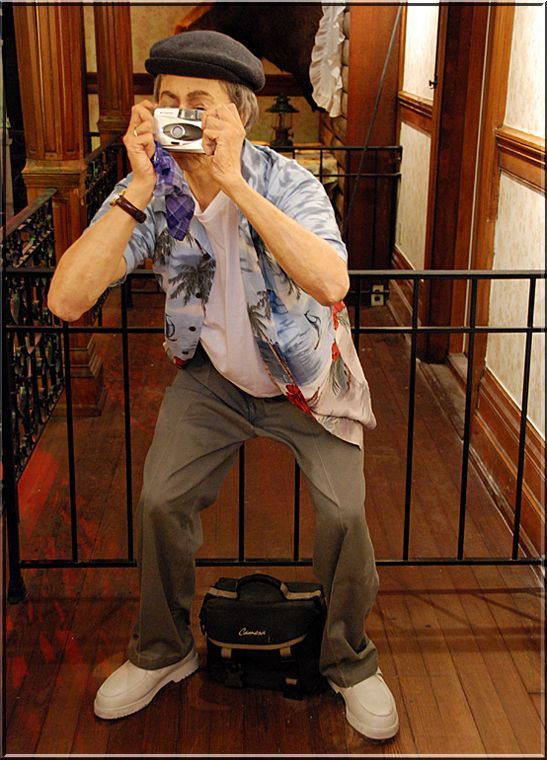
In St. Augustine, FL, at Ripley’s Believe It Or Not, tourists come, disconcertingly, face to face with themselves.
The Ripley statue shows the common posture almost guaranteed to give camera shake: an uncomfortable crouch with no attempt to support the elbows either on a prop or even to tuck them against the ribs.
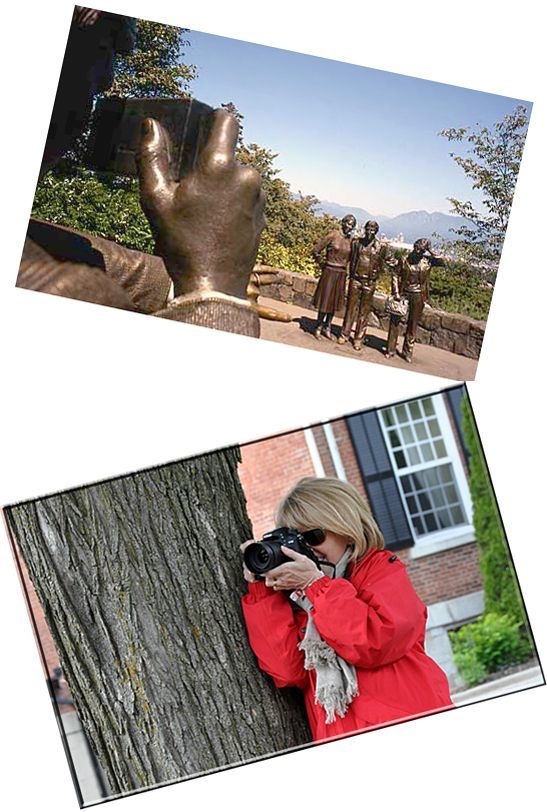
A statue in Vancouver, British Columbia, again shows the poorly supported camera — fortunately, the subjects aren’t moving. We can’t always carry a tripod but substitutes are always around us; we can brace our back against a wall, steady the camera against a forehead, prop our hand against a tree, etc.
There are plenty of capable photographers with advice for us, if we can only find them. We discovered John Greengo on a small boat cruise to Alaska.

Greengo’s presentation is partly tongue in cheek, but he does show the overburdened amateur. The reality facing an observer is that, yes, binoculars will show details of something interesting, but to photograph it better the average enthusiast has to get much closer.
“More is not better,” he says. “It’s not about gear. It’s about moments. A lot of things in life happen only once and you have to be ready.”
Get closer
Frank Capra, the legendary Hollywood director, used to say, “If your pictures aren’t good enough you’re not close enough.” And Ansell Adams once said, “A good photograph is knowing where to stand.” Perhaps, but many of his magnificent photographs were achieved by standing in his darkroom.

Try this: Move closer. Then move closer. Steven Spielberg says, “People have forgotten how to tell a story,” and what story is more dramatic than mother and child?
Tell a story
In Provincetown, on Cape Cod, we talk to Brad Fowler at Song of Myself Photography. Light is harsh on the beach in summertime, he says. That has to be handled, usually by using the golden light at the beginning or end of the day. We are aware of the alpenglow at those times.
When press trips are arranged at destinations for photographers and travel writers, the writers know they will never see the photographers at breakfast or dinner — that’s when they are out shooting.
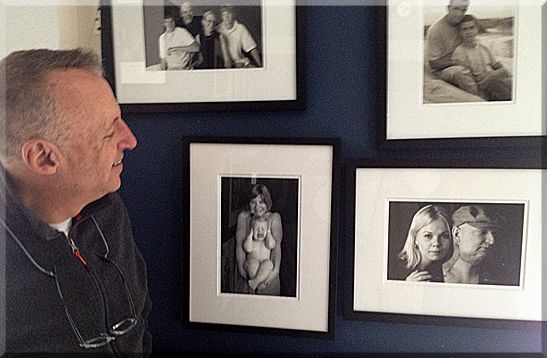
Mother and child is an obvious story, and Fowler looks back on one such subject poignantly; but he remembers more keenly the father and daughter picture he took at the request of the daughter. The father had just had extensive head and neck surgery for malignancy and she wanted, needed, this memory photographed. Fowler understood.
Celebrity photography is different.
The worst criticism may come from the subject; the way a husband may have to delete a perfectly fine photograph of his wife because he took it from her wrong side — but we digress.
Celebrities are more extreme: they, presumably, want their essence to be captured for all time. How does a photographer do that? With some difficulty, one would imagine.
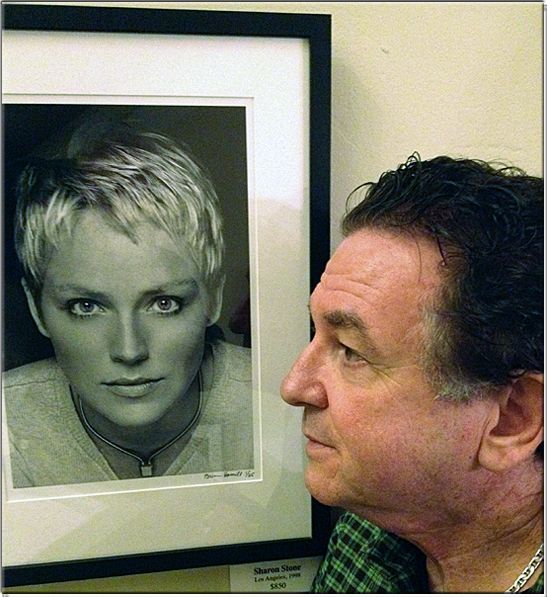
Brian Hamill stands before one of his favorite subjects: a young Sharon Stone. It’s probably easy to get a beautiful photograph if you have a beautiful subject and, of course, the focus is always on the eyes. The ideal lens for portraits is an 80mm lens, even up to 110, but point-and-shoot and smartphone cameras are, perforce, wide angle.
A wide angle lens is great for the current affectation, the “environmental portrait” but a wide angle used close up has huge distortion. That was the lens Alfred Hitchcock would use to make the figure looming over the subject more horrifying.
Be patient
There’s a lot of advice out there to help you get better photographs where speed is of the essence. Such as: when you have completed a session put the digital camera into “burst speed” so that, if the unexpected happens, you may get one shot that works. The corollary may be true, too; when done neutralize the controls (so that, for example, you’re not out in sunshine with the camera still set for indoor light, and so on).
You can “clean up the background,” too, before lifting the camera simply by noticing telephone poles growing out of the subject’s head and other idiosyncrasies — and by moving your feet.
But speed is not always of the essence. Often you have to be patient — for people to move or clouds to pass or lamp posts to light up.
David Brookover, a photographer in Jackson Hole, WY, hasn’t won his gorgeous landscapes by being in a hurry.
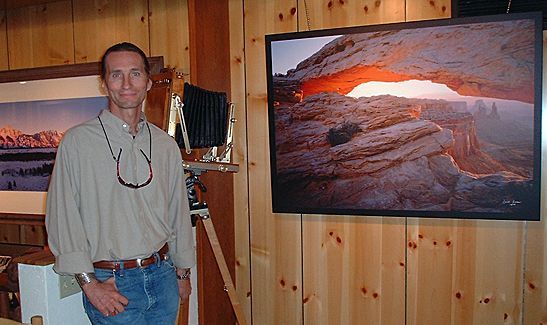
In this easy age of digital photography, Brookover still sometimes labors over wild terrain with a heavy, old-style view camera and its equally awkward tripod. He will arrive to find the light is wrong, so he does not shoot the single plate in his camera but instead leaves to return another day. It is the price he pays to get the image he knows is out there.
Professional photographers usually know what image they are pursuing. Like pro golfers, they have already played that hole in their head. But sometimes we hobbyists don’t know what that special photograph is to us until we have gone over the images at the end of the day and discovered what we have. It’s a good discipline to do this.
We may find something didn’t work and we may still be able to reshoot if it’s important enough. And if you’re high on Machu Picchu (no pun intended), it may be important enough.

A visitor’s memories of Alaska and images will differ greatly but they, again, should tell a story — the visitor’s story.
Sometimes a photograph comes at you of its own volition. You go to Washington, DC, knowing you will see the Lincoln Memorial and betting you’ll want to photograph it.
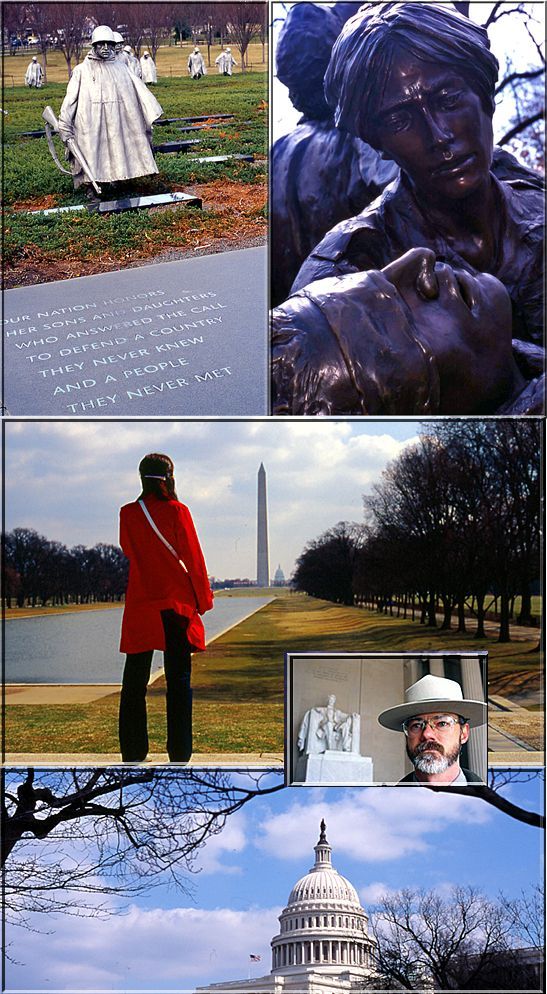
Knowing you will, again, go to the Wall, you hope your camera won’t intrude — but this time you are so personally moved by Glenna Goodacre’s monument to nurses, her Vietnam War Memorial: Woman’s Memorial that you have to get close to pay your own tribute.
Washington, DC, overwhelms photographers. Their journeys there are personal and that means our capital works as our capital.
The Andersons, who live in San Diego, are the resident travel & cruise columnists for Physician's Money Digest. Nancy is a former nursing educator, Eric a retired MD. The one-time president of the NH Academy of Family Practice, Eric is the only physician in the Society of American Travel Writers. He has also written 5 books, the last called The Man Who Cried Orange: Stories from a Doctor's Life.




